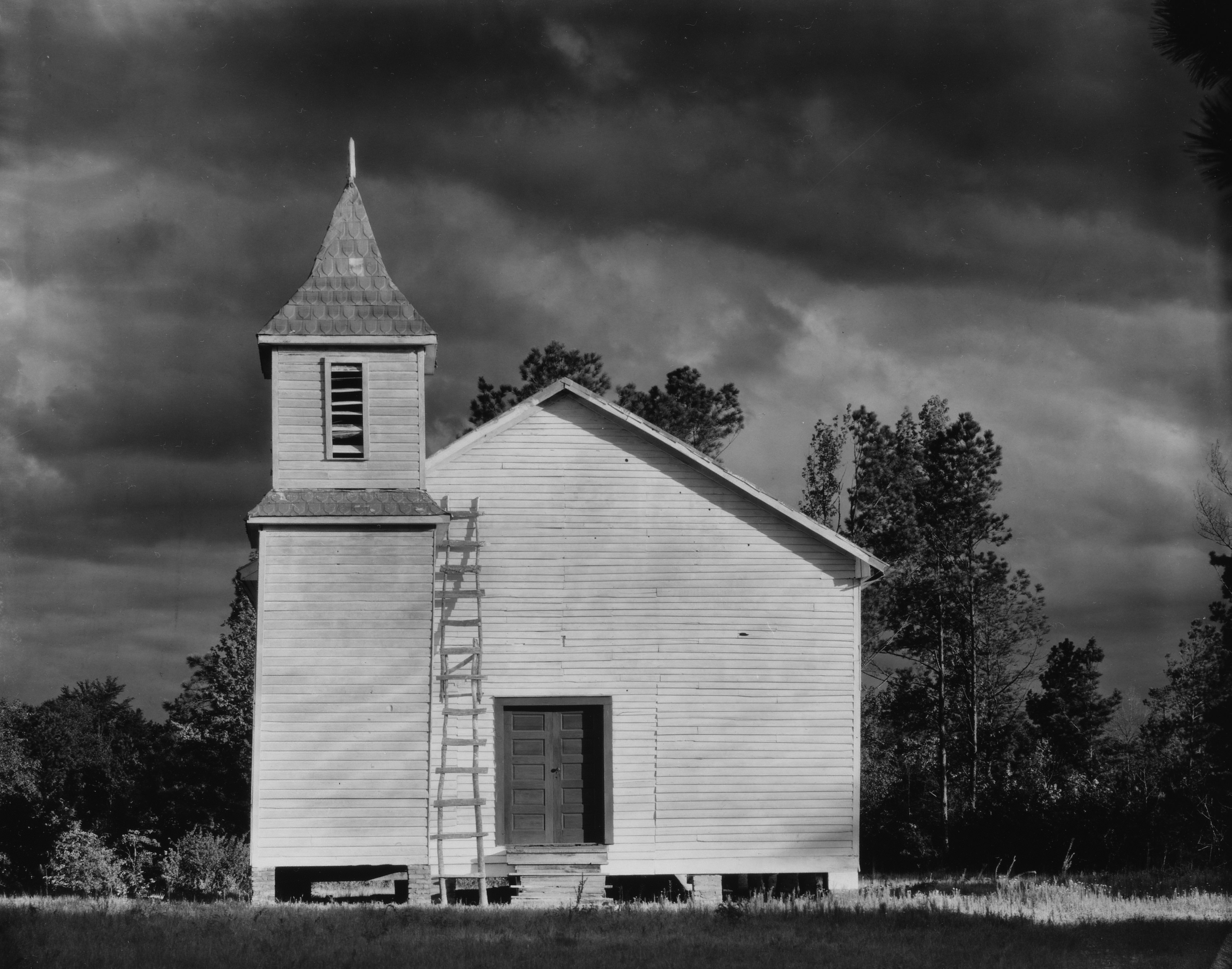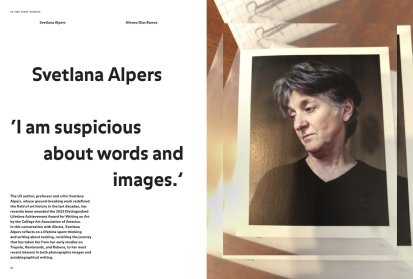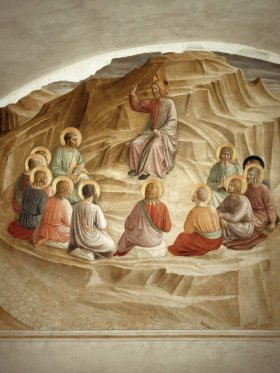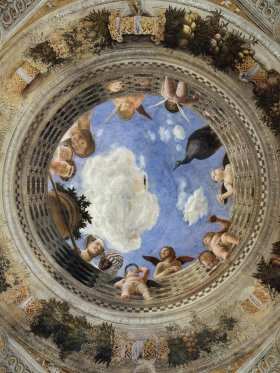Few names have been as eminent and dominant in the writing and thinking of art as Svetlana Alpers, a professor emerita of History of Art at the University of California, Berkeley, and visiting scholar at New York University. The daughter of Wassily Leontief, a Nobel laureate in economics, and the poet Estelle Marks, Svetlana Alpers received a bachelor’s degree from Radcliffe College in 1957 and a doctorate in Art History from Harvard University in 1965. She was one of the first women to hold a chair of art history at Berkeley, where she taught from 1962 to 1994. Combining technical, aesthetic and iconographic studies, her pioneering works on Flemish and Dutch art, Rembrandt, Velázquez, Tiepolo, and Rubens remain authoritative references. Svetlana Alpers co-founded the interdisciplinary journal Representations in 1983, and her many books include The Art of Describing (1983); Rembrandt’s Enterprise (1988); Tiepolo and the Pictorial Intelligence (with Michael Baxandall, 1994); The Making of Rubens (1995) and The Vexations of Art (2005), as well as an anti-memoir, Roof Life (2013). She has recently left painting behind and shifted her attention towards photography, with the acclaimed monograph Walker Evans: Starting from Scratch (2020). The celebrated art historian talks to Electra about spending a lifetime looking at art, and writing about looking as a form of knowledge and a way of being in the world.
The US author, professor and critic Svetlana Alpers, whose ground-breaking work redefined the field of art history in the last decades, has recently been awarded the 2023 Distinguished Lifetime Achievement Award for Writing on Art by the College Art Association of America. In this conversation with Electra, Svetlana Alpers reflects on a lifetime spent thinking and writing about looking, revisiting the journey that has taken her from her early studies on Tiepolo, Rembrandt, and Rubens, to her most recent interest in both photographic images and autobiographical writing.

© Michael Baxandall
AFONSO DIAS RAMOS You grew up in an academic household. Was art a major element while growing up?
SVETLANA ALPERS No, it was just a part of it. We had art around the house and my parents also had artist friends. Mark Rothko was a close friend and he summered where we summered in Vermont. So, we knew our artists. But art was not primary. That was the academy. It was Harvard University.
ADR You started out by studying literature. What prompted the transition to images?
SA I think that it was partly because I got tired of interpretation. What I took from literature was close reading. That is a portable skill. If you know how to attend closely to words on a page, you can take that and apply it to something else, which is what I did to images. I was actually less interested in the interpretation of a text than simply in attention. I learned the attention and then I moved away to something else. But I didn’t really do that until I graduated. I took a couple of courses, as we called them at Harvard, in art history and art. Then I was hooked.
ADR During that period at Harvard, you were surrounded by prominent names of cultural history. It was not just your advisor Ernst Gombrich, but a whole cohort of German émigrés who fled the Nazis. What was that intellectual milieu like for you?
SA My father was Russian, and he wasn’t an émigré. He came to the US to do scientific work. He went from Saint Petersburg to Berlin and got a PhD. Then, still quite young, he came to the US and began to teach at Harvard. The Harvard that I grew up in was a Harvard of many, many people who fled the Nazis. Partly because of my father who was Russian but European, I grew up very much in a European world. Of course, art history in America was not totally, but largely, populated by people who had fled the Nazis. So I grew up in that European atmosphere, or bubble, when art history was still European. It was not contemporary art history, but historic art history.
"What I took from literature was close reading. That is a portable skill."
ADR You wrote a famous paper early on about Vasari’s descriptions of art, in line with the common concerns of the discipline then. But then you broke the hegemony of the Italo-humanist tradition by gravitating towards Dutch art. How was that received?
SA First I went Flemish. We separate the categories, that is the nationalism of art history… but I first worked on Rubens and that was already a break, although he was kind of pan-European. Rubens was an artist who travelled to Italy and worked there for eight years and painted in a style that combined the Italian style and Northern style. I parted ways by deciding to write my dissertation on Rubens and only after that did I move into Dutch art. That was the second step. But I was clearly going against the grain. In Harvard, the central concern of art history as a discipline was based on Italian art. And that has been lost now. I think that it is a sad loss, because the way people thought was determined by the fact that Renaissance Italian art was the heartland of the study of art history. I learned from that. I couldn’t have done what I did without that. But then I decided that I didn’t want to do it and that I wanted to be different.
ADR What do you think of the current state of this field, as it continues to expand beyond those habitual geographical confines?
SA There has been a term that, for me, seems unsustainable: global art history. Art history is finished and global art history is meaningless. It is just another kind of study. This word in the US became ‘visual studies’. Interestingly enough, at that moment, I wrote an answer to a questionnaire that was circulated by the October journal. They asked about what I thought of visual studies as a practitioner. I said that when I had used that term, I was talking about Dutch art, which was primarily visual and not textual. I was not saying that the field that I’m working in is visual studies. Now, the global field is very much visual studies not as I meant it, but as people mean it when they say that everything is visual. It can be videos, it can be movies, it can be anything. Visual studies became a big umbrella.
"We are living in an age that worries about tolerance, but is itself extremely intolerant. Art, in a sense, stands above it."

Walker Evans, Bowery Lunchroom, New York, 1933 © Photo: Scala, Florence / The Museum of Modern Art, New York

Walker Evans, Untitled, 1936 © Photo: Scala, Florence / The Museum of Modern Art, New York
ADR Curiously, your work is often invoked in visual studies, not only your arguments about the centrality of art among disciplines of knowledge, but specifically your claim about the proximity of painting and maps. Is this not something you intended?
SA What one makes, one makes. I didn’t have grand intentions beyond that. But if it gets into place, then people do what they want with it. For example, what happened with maps is that they became attached to notions of empire. But my study of art and maps was formal. I was talking about the way in which Dutch painters structured and made their images like maps. I was not saying that the Dutch went out and oppressed the rest of the world. I was not interested in maps in a political but in a formal sense, what they looked like. That was taken and the study of maps became largely, but not totally, a study of imperialism. I made a point about getting two categories connected, paintings and maps, and people then took it in a direction which did not interest me.
ADR But it was generative in so many different ways. Also, no one takes the work of Simon Schama, for instance, to be a study of imperialism…
SA I suppose so.
[...]





Share article